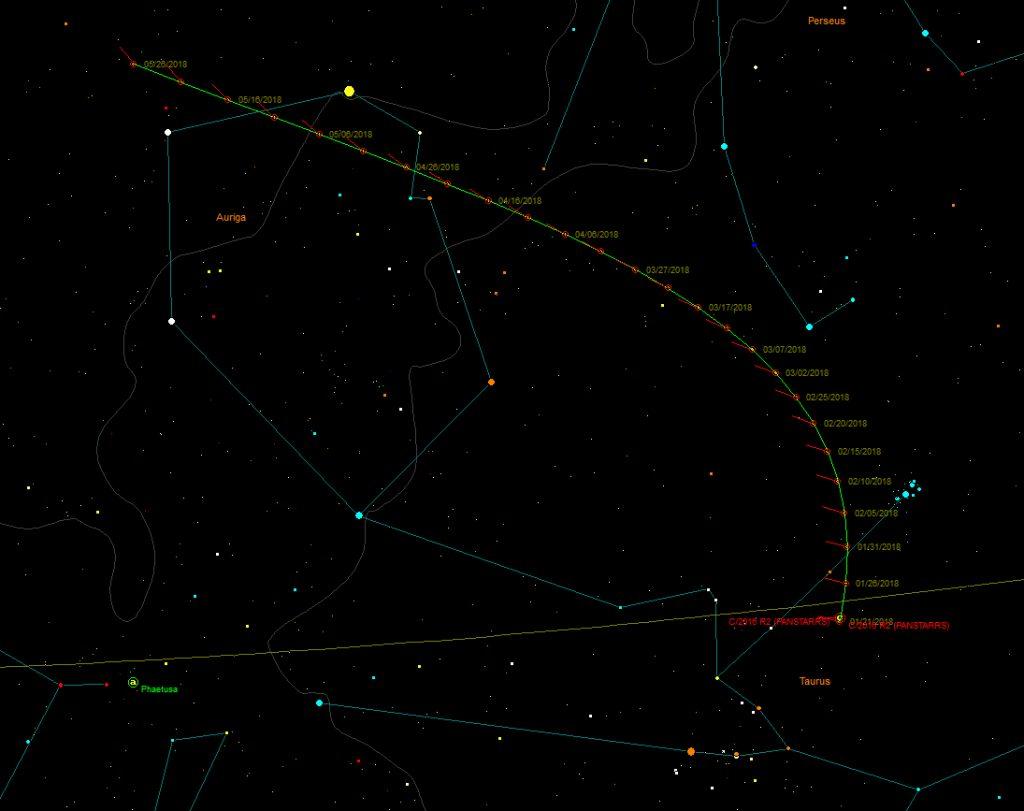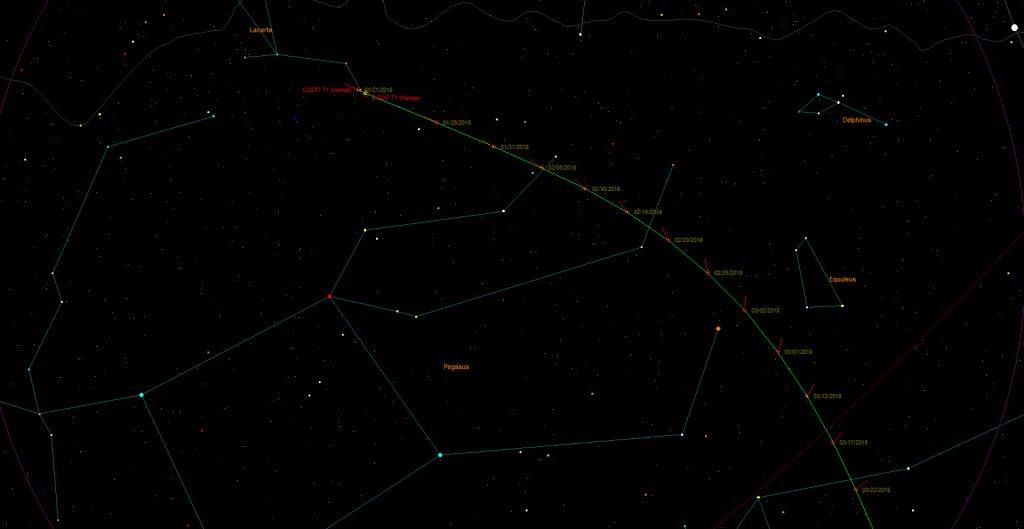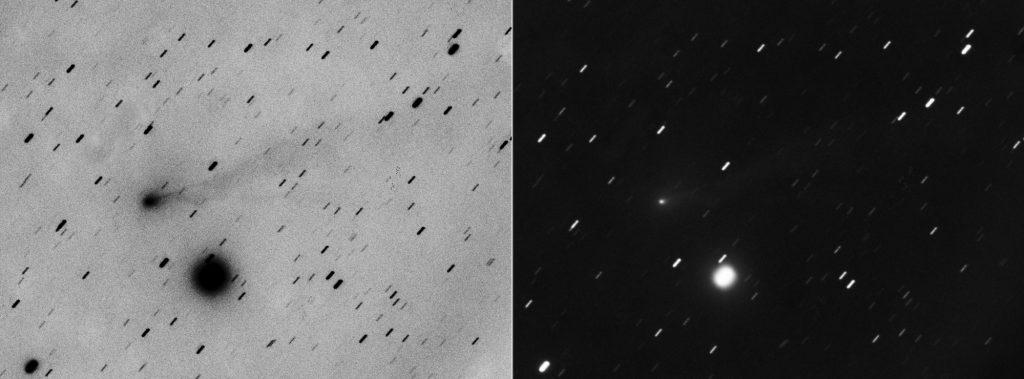Comet C/2017 T1 (Heinze).
This fast moving comet is rapidly moving south.
Here’s an image I captured on Friday the 5th of January.
Over 10 minutes during which these CCD images were taken it has shifted considerably.
Left image stacked on stars, right image stacked on the comet. This comet was really shifting.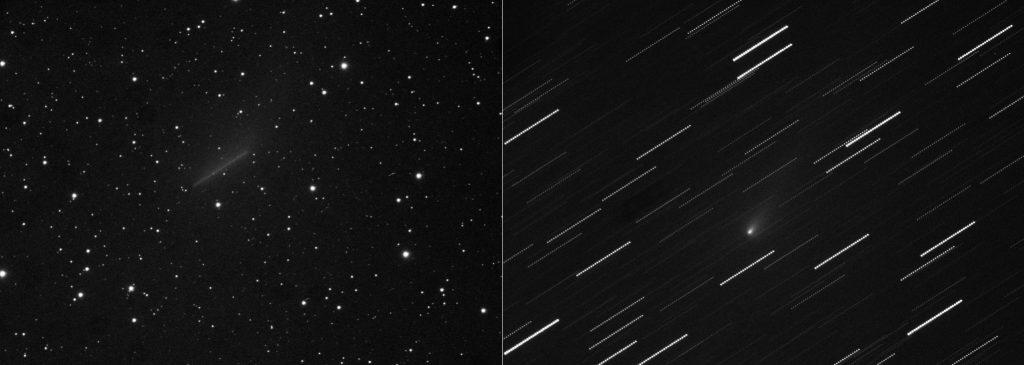
It will reach perihelion at the end of February, but it passes very close to the Sun, so like the infamous Comet C/2012 S1 (ISON) before it, is unlikely to survive its close encounter with the Sun. It is about 12th magnitude and is unlikely to get much brighter. But don’t forget, predicting a comets brightness is hugely unreliable.
The map below shows the path of the comet as it dashes to the west of Pegasus as it approaches the Sun.
(Click on the image for a larger version). Map created using C2A planetarium software.
It passes to the east of the Globular Cluster Messier 15 between the 25th & 27th of February shown in this map.
(Click on the image for a larger version). Map created using C2A planetarium software.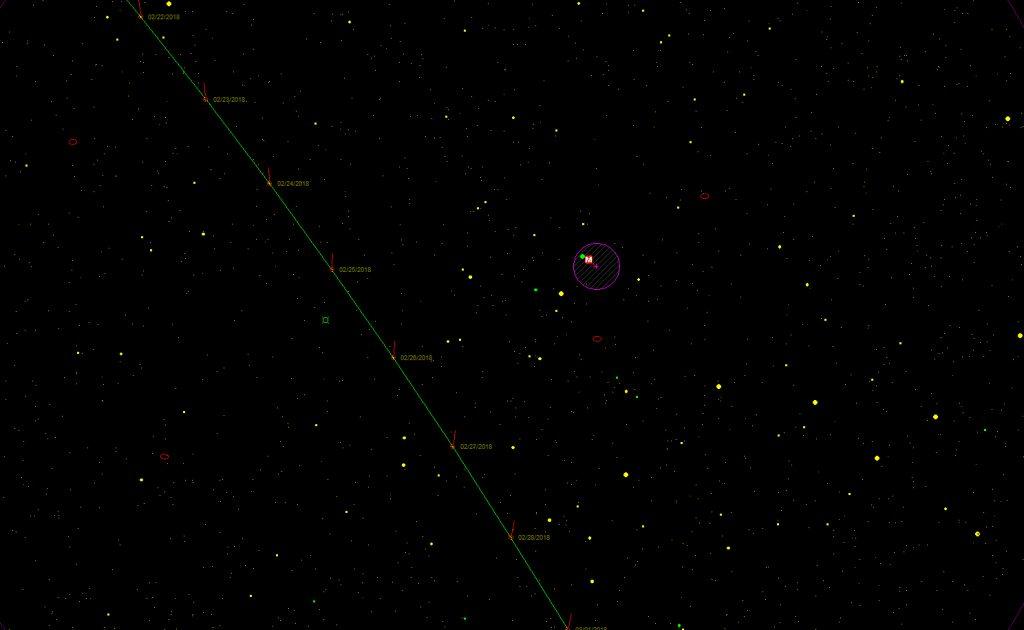
Comet C/2016 R2 (PanSTARRS).
This comet is becoming a lot more interesting. It is currently around magnitude 13, so quite faint.
It reaches perihelion in late May, but as the comet gets further away from Earth, it gets fainter and is likely to fade to about 14th magnitude by then.
I first caught the comet on the 8th of December 2017.
At that time, as you can see from my image below, it looked like many other comets, as faint smudge of light, but it showed a hint of two tails (Pointing towards 10 and 2 O’clock).
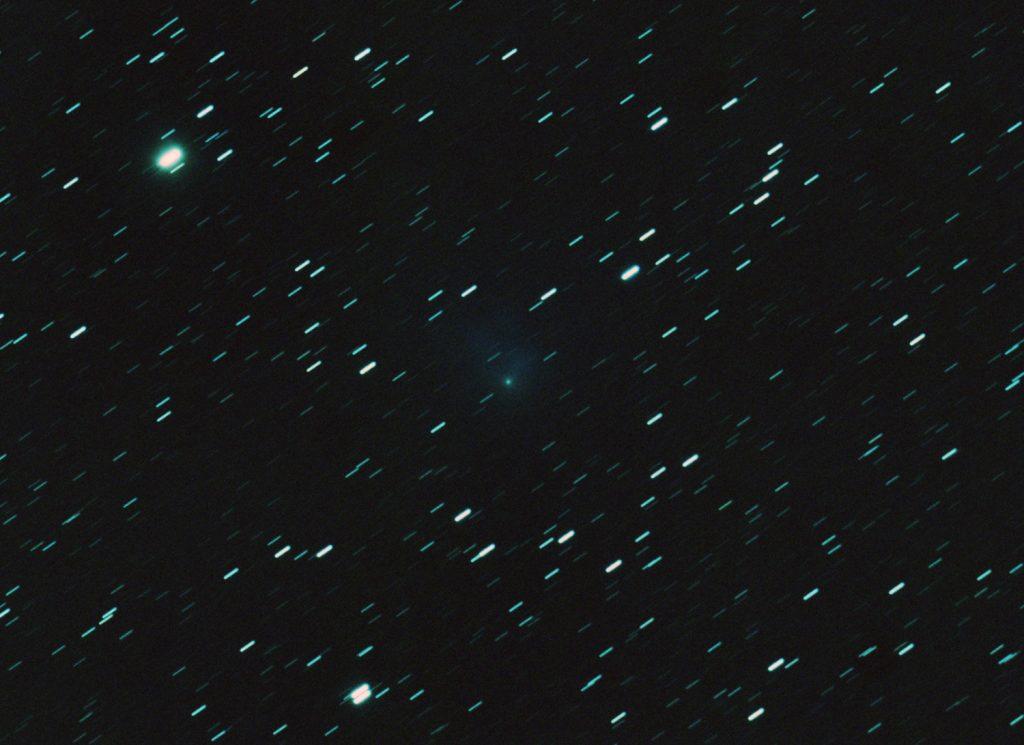
On the evening of the 7th of January, I was testing out a CCD camera that someone has loaned me.
I have had to enhance the image somewhat, but the tail/s look very intricately detailed.
There’s a heck of a lot happening with this comet.
I got another shot on the comet on the evening of the 19th of January.
Using the CCD camera, I was monitoring the images coming off the camera, they appeared to be ever so slightly different in each image. The image below shows the quick process I did on each set of images as they came off the camera.
The changes can clearly be seen. I’m working on all the 297 subs taken that night to try and produce an animation.
I may be a while.
The comet reaches perihelion in early May, but is not predicted to reach more than magnitude 13. But with that amount of activity going on already, who knows what might happen.
The map below shows the comet as it heads northwards away from Taurus, past the leg of Perseus and up into Auriga.
(Click on map for bigger version). Map created using C2A planetarium software.
